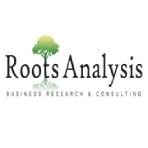


The global neurovascular devices market is poised for robust growth,
driven by technological advancements, rising disease prevalence, and a shift toward minimally invasive treatments. This article summarizes the key insights from the Roots Analysis report, focusing on market projections, growth drivers, segmentation, application areas, challenges, and leading industry players.
Market Growth Projections
The neurovascular devices market is projected to expand from USD 3,325 million in 2024 to USD 3,571 million in 2025, and further to USD 7,011 million by 2035. This represents a compound annual growth rate (CAGR) of 6.98% over the forecast period. The market’s upward trajectory is supported by continuous innovation, increased investment, and a growing preference for minimally invasive procedures.
Key Drivers of Growth
Several factors are fueling the expansion of the neurovascular devices market:
– Rising Incidence of Neurovascular Disorders: The increasing prevalence of conditions such as ischemic stroke, aneurysm, stenosis, and arteriovenous malformations (AVMs) is a primary driver. According to the World Health Organization, approximately 15 million new cases and five million deaths occur annually due to neurovascular disorders.
– Limitations of Conventional Surgery: Traditional surgical approaches—including open neurosurgery, microsurgery, craniotomy, and bypass surgery—are complex, time-consuming, and associated with lower success rates and longer recovery times. Neurovascular devices offer more precise, targeted, and less invasive alternatives.
– Technological Advancements: Innovations such as intracranial stents, embolic coils, flow diverters, guidewires, and catheters have improved treatment outcomes. The integration of artificial intelligence and machine learning is further enhancing device efficacy.
– Favorable Reimbursement Policies: Supportive reimbursement frameworks encourage the adoption of neurovascular devices and procedures.
– Investment and Partnerships: Over USD 1.5 billion has been raised by neurovascular device developers, primarily through venture capital and private placements. Strategic partnerships and acquisitions are also accelerating market growth.
Market Segmentation
The neurovascular devices market is segmented by device type, therapeutic application, end user, and geography:
– Type of Device:
– Neurothrombectomy Devices
– Embolization Devices
– Angioplasty Devices
– Neurothrombectomy devices currently hold the largest market share (51%), driven by their safety and efficacy in treating ischemic stroke.
– Therapeutic Application:
– Ischemic Stroke
– Aneurysm
– Stenosis
– Arteriovenous Malformations (AVMs)
– Devices for ischemic stroke treatment dominate the market (49% share), reflecting the high prevalence of this condition.
– End User:
– Hospitals and Specialty Clinics
– Ambulatory Care Centers
– Other End Users
– Hospitals and specialty clinics account for 71% of the market, due to high patient admissions and access to advanced technologies.
– Geography:
– North America
– Europe
– Asia-Pacific
– Middle East and North Africa
– Latin America
– North America leads the market with a 47% share, attributed to strong regulatory frameworks and a high concentration of device developers.
Application Areas and Market Trends
Neurovascular devices are primarily used to treat disorders characterized by disrupted blood flow to the brain, spinal cord, and peripheral nerves. These disruptions result from blockages (embolism), ruptures (hemorrhage), clot formation (thrombosis), or vessel narrowing (stenosis).
– Ischemic Stroke: The largest therapeutic segment, driven by the high global prevalence of stroke.
– Aneurysm: The fastest-growing segment, with a CAGR of ~9%, due to complications associated with conventional surgical methods.
– Arteriovenous Malformations (AVMs): Increasing partnerships and collaborations among device developers are fostering innovation in this area.
Challenges and Opportunities
While the market is growing, challenges remain:
– Complexity of Neurovascular Disorders: The intricate nature of neurovascular diseases requires highly specialized devices and skilled practitioners.
– Regulatory Hurdles: Strict regulatory requirements for device approval and post-marketing surveillance can slow market entry.
– High Cost of Innovation: Developing advanced neurovascular devices involves significant investment in research and development.
Despite these challenges, the market presents substantial opportunities, particularly in emerging regions such as the Middle East and North Africa, where the market is expected to grow at a CAGR of ~10%.
Key Players and Competitive Landscape
The neurovascular devices market features nearly 50 device developers, including large, mid-sized, and small companies. The majority (41%) are headquartered in North America, benefiting from unified regulatory frameworks. Leading players include:
– Integer Holdings
– Johnson & Johnson
– Medtronic
– Stryker
Other notable companies include Acandis, Achieva Medical, Balt, HeMo Bioengineering, MicroVention, Penumbra, Phenox, Shanghai HeartCare Medical Technology, and Zylox-Tonbridge.
ovascular disorders.
